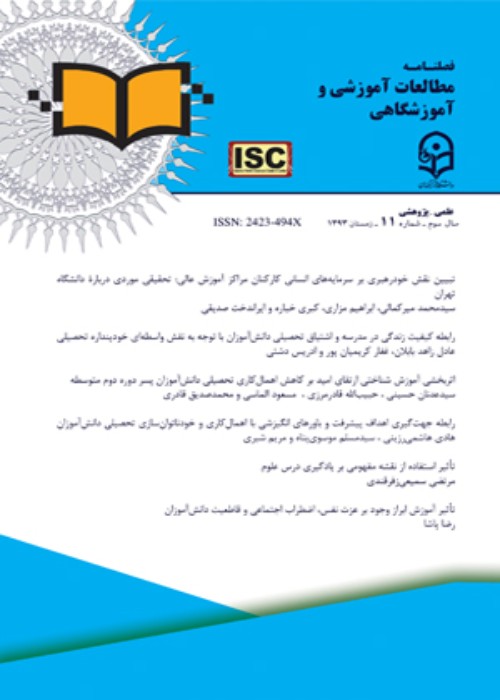Designing a Model for Elementary School Curriculum Decentering: A Qualitative Research
Author(s):
Article Type:
Research/Original Article (دارای رتبه معتبر)
Abstract:
The purpose of this study was to design a model of elementary school curriculum Designing based on the characteristics of the contexts, levels and elements of the curriculum in relation to the localization of the curriculum. The research approach was qualitative and included content analysis and synthesis research methods. According to the type of indicators, the statistical population of the study was variable in different questions.The first population included primary education experts and educational groups, 13 of whom were purposefully selected by special sampling, and their views and opinions were assessed through interviews. The second community was a textual community in which the documents and scientific texts of the last twenty years in the field of curriculum decentralization were examined, as well as a community of curriculum specialists, experts and primary school teachers, 19 of whom were purposeful and chain sampling Were selected and information was obtained through interviews and study and review of scientific content. In data analysis, conventional content analysis and content analysis of Gall et al. Research findings showed: The statistical population includes curriculum specialists, primary education experts and departments, elementary school teachers and scientific texts in the field of decentralization. Information was obtained through interviews and review of scientific content with the amount of different samples selected. In data analysis, the method of customary content analysis and content analysis of Gall et al. The research findings are: 1) components of change discourse, soft subject areas, systems thinking and organic empowerment have been identified as necessary contexts for the implementation of the liberalization approach. 2) The decision-making process has four levels (social, academic, institutional and educational) which is based on the participation of provincial, regional and school officials and the institutional level acts as a link between academic (theoretical) and educational (practical) decision-making levels and Its role has a special place in the theoretical-practical (quasi-practical) dimension. 3) According to Klein, the elements of the curriculum interact with each other in a network structure and, influenced by the theory of social constructivism, emphasize the design of learning environments.
Keywords:
Language:
Persian
Published:
Journal of Educational and Scholastic Studies, Volume:12 Issue: 34, 2023
Pages:
387 to 423
magiran.com/p2622549
دانلود و مطالعه متن این مقاله با یکی از روشهای زیر امکان پذیر است:
اشتراک شخصی
با عضویت و پرداخت آنلاین حق اشتراک یکساله به مبلغ 1,390,000ريال میتوانید 70 عنوان مطلب دانلود کنید!
اشتراک سازمانی
به کتابخانه دانشگاه یا محل کار خود پیشنهاد کنید تا اشتراک سازمانی این پایگاه را برای دسترسی نامحدود همه کاربران به متن مطالب تهیه نمایند!
توجه!
- حق عضویت دریافتی صرف حمایت از نشریات عضو و نگهداری، تکمیل و توسعه مگیران میشود.
- پرداخت حق اشتراک و دانلود مقالات اجازه بازنشر آن در سایر رسانههای چاپی و دیجیتال را به کاربر نمیدهد.
In order to view content subscription is required
Personal subscription
Subscribe magiran.com for 70 € euros via PayPal and download 70 articles during a year.
Organization subscription
Please contact us to subscribe your university or library for unlimited access!



